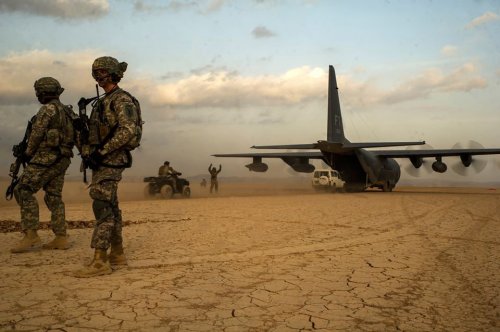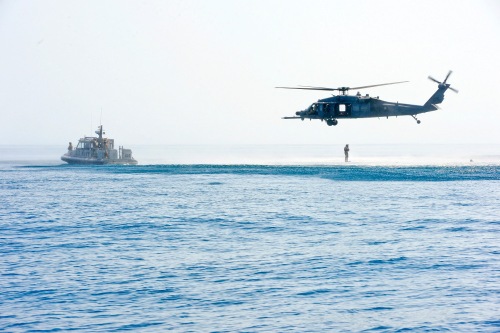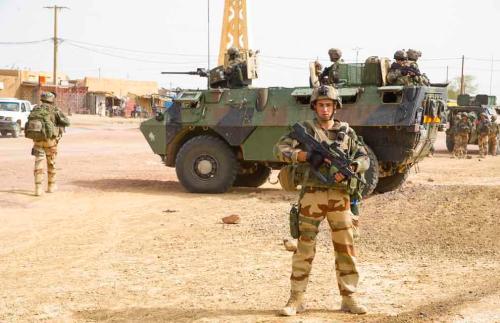It has already been noted here that this year’s iteration of the annual Flintlock exercise is underway in Niger. The exercise began this year on February 19th, and is scheduled to end this Sunday, March 9th. The significance of Niger as this year’s host has already been mentioned.

A member of the Canadian Special Operations Regiment instructs members of Niger’s 22nd Battalion during Exercise Flintlock 2014.
An official US Africa Command (AFRICOM) piece on the exercise that appeared on their website yesterday has some additional items worth noting. The first is highlighting the aerial resupply portion of the training. AFRICOM, and US European Command (EUCOM) before them, have both spent considerable effort in developing this capability for African forces. AFRICOM run an annual exercise, Atlas Accord, specifically focused on this capability. Atlas Accord replaced a previous annual exercise, Atlas Drop, in 2012. EUCOM had started Atlas Drop in 1996.
The belief is that aerial resupply may be the answer to the problem of conducting sustained operations for many African nations. Most African militaries lack a robust logistics arrangement, meaning that their forces are limited in how far away from their base they can operate and for how long. This is especially true of many militaries in Africa’s Sahel region, which has historically been referred to by the US government as an “ungoverned space.” Aerial resupply can also help in the rapid distribution of humanitarian assistance following natural disasters or in other times of need, such as during droughts.
By integrating this component into Flintlock, it frees up resources to host Atlas Accord elsewhere on the continent. In 2012, Atlas Accord was held in Mali, where the annual Flintlock exercise was to be held, but was canceled. Last year’s Atlas Accord exercise was held in Nigeria.
Its also worth noting the international participants in this year’s Flintlock exercise. While the African nations participating in the exercise change relatively little from year to year, the US has been inviting more nations from outside Africa to participate in recent years. From the AFRICOM news piece, we can see that Spanish and Canadian special operations forces are participating this year. Both of these nations also participated in the 2011 Flintlock exercise.
In other news, the North Dakota National Guard announced that it was expanding in its participation in the National Guard Bureau’s State Partnership Program (SPP). Since 1993, State National Guards in the United States have formed bilateral relationships with foreign militaries as part of the SPP. Training exchanges are intended to benefit both sides and provide a continuity of relationship that might not necessarily be found in other arrangements. North Dakota’s National Guard has an existing history with Africa, beginning its first SPP partnership in 2004 with Ghana. The North Dakota Guard will not also be a partner with the armed forces of Togo and Benin. State Guards now partner with ten countries in the AFRICOM area of responsibility.




